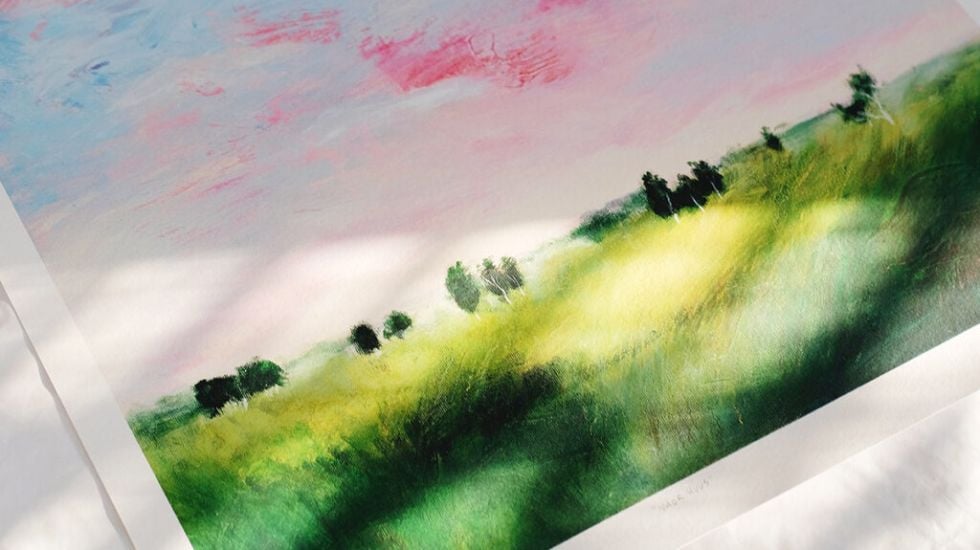

Have you ever encountered a masterpiece that made you question, "What is it called when an artist paints on a print?" The answer lies within the realm of mixed media art. A fusion of different artistic mediums, artists often resort to painting over prints to add depth, recreate original artwork, or simply, put forth a unique artistic expression. A mixed media piece, in effect, marries the individualistic charm of a painting and the reproducibility of prints.
"How do I get prints made of my painting?" is a question often raised by modern artists and art enthusiasts alike. The process involves digitizing the original painting with a high-resolution scan or photograph. Thereafter, a quality print is produced using archival inks and substrates, ensuring the print remains vibrant and fade-resistant over time.
Uninitiated folks often ponder, "What is the difference between painting and print?"
The realm of printmaking has been shaped by both traditional techniques and modern technological advancements. The traditional print methods such as lithography, woodcut and etching juxtapose with digital printmaking techniques which leverage high-quality inkjet printers termed as Giclee prints.
In the traditional printmaking process, an original image is carved, etched or inscribed onto a surface — a plate, a block or a screen. Thereafter, ink is applied onto this surface and then transferred onto paper or fabric, resulting in a print. Modern techniques like Giclee printing involve reproducing digital images on high-quality paper or canvas, ensuring finer color accuracy and detail.
Art & The Importance of Authenticity
Ensuring the seller's expertise, recognized within the art community, and their authoritativeness, demonstrated through positive reviews and testimonials, is essential. Additionally, the authenticity of the artwork, attested through a certificate of authenticity or a signature of the artist, speaks volumes about its trustworthiness.
In the vast and ever-changing world of paintings and prints, there's always more to learn and appreciate. It's the journey that's as beautiful as the destination, just like a well-composed piece of art. Remember that the beauty of art does not merely lie in its aesthetic appeal but also its process, its story, creed and the emotions it arouses in us. For every masterpiece that you encounter, there's a rich tapestry of techniques, creativity and history just waiting to be explored.
The intriguing world of paintings and prints is also largely characterized by various art movements and styles, each of which has left a discernible imprint on the trajectory of art history. Understanding these movements can enrich our appreciation and interpretation of a specific piece of artwork, whether it's a painting or a print.
From the richness of realism portraying the exact likeness of the subject, the emotion-laden strokes of expressionism, the dreamlike dimensions of surrealism, to the fragmentary and geometric aspects of cubism — each movement presents a unique perspective. These movements have defined eras, given birth to countless masterpieces, and impressed upon us the true power and versatility of the artistic spirit.
For an art enthusiast, buying paintings and prints can also be an investment. But how does one decide between investing in a painting or a print? The choice largely depends on one's budget, taste in art, and investment goal.
Original paintings, generally being one-of-a-kind, tend to be costlier, and may appreciate more in value over time, especially if the artist gains renown. Paintings also bring the joy of owning a unique piece of art that carries the artist's personal touch.
Prints, on the other hand, are more accessible and economical choices. Limited edition prints can appreciate in value too, but usually at a slower rate than original artworks. The availability of prints by renowned artists can bring a touch of prestige and elegance to your space without the high price tag.
Finally, remember that the value of art, more than being a monetary investment, lies in the enjoyment and inspiration it provides. It's about falling in love with the piece, resonating with its message, and cherishing its presence in your life.
In today's modern age, art finds a new home — the digital world. Digital art, including digital paintings and prints created or edited using software, opens up a whole new universe of artistic possibilities. It marries technology and artistry to produce works that are revolutionary, innovative and contemporarily relevant.
Despite being a relatively new field, digital art has already made significant strides. Collectors and museums around the world are now recognizing and appreciating these art pieces for their experimental nature and accessibility. While the debate between the supremacy of traditional art and digital art continues, both are undoubtedly vital expressions of our human creative spirit.
To encapsulate, paintings and prints, traditional or digital, embody the limitless potential and eclectic nature of human creativity. Art appreciation becomes enjoyable when we broaden our understanding and draw connections between the artwork, the historical context and the artist's intentions. This nuanced gaze makes us not just viewers, but active participants in the world of art. Let this guide empower you to explore and enjoy the fascinating world of paintings and prints with a fresh perspective and newfound knowledge.